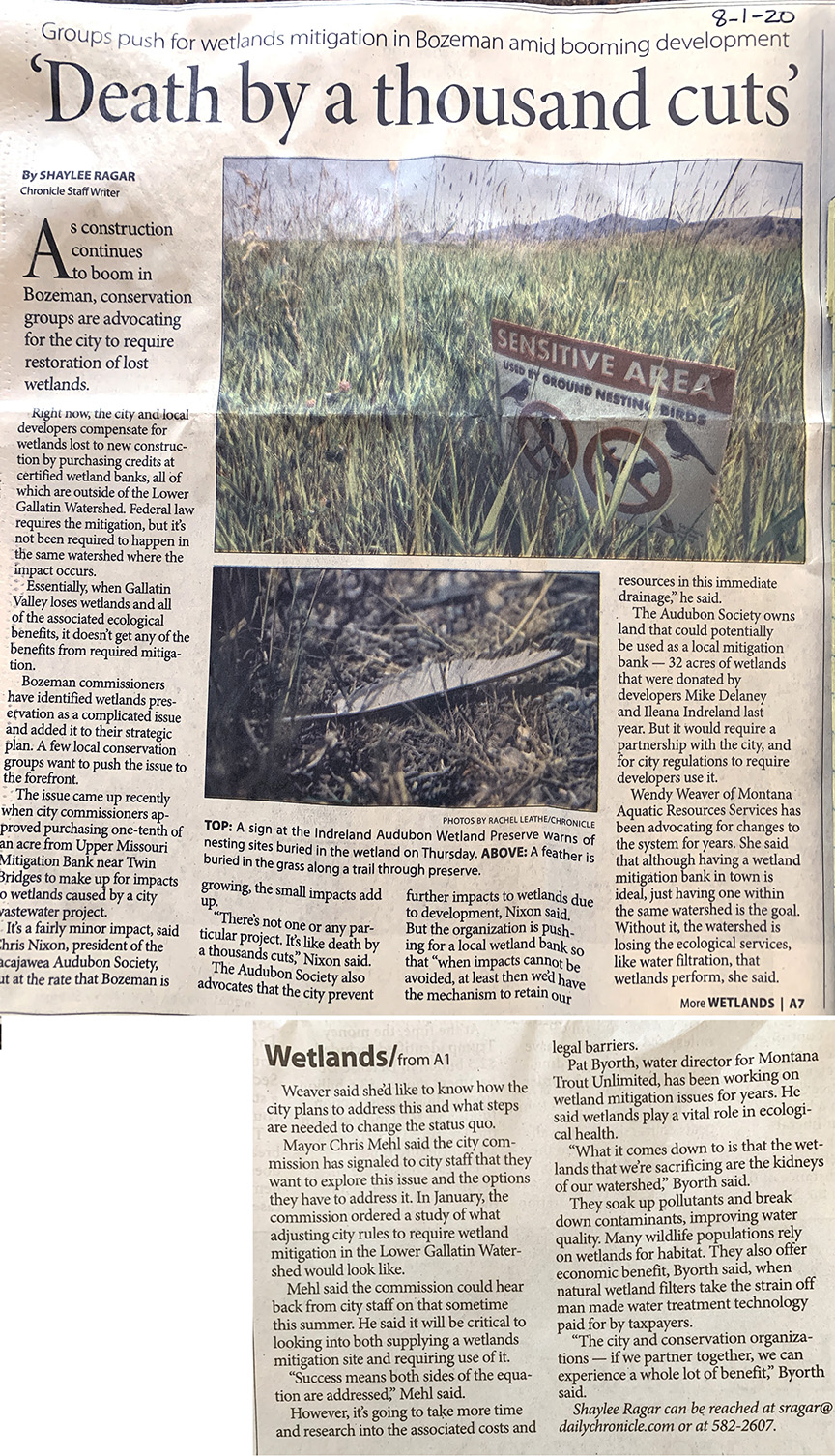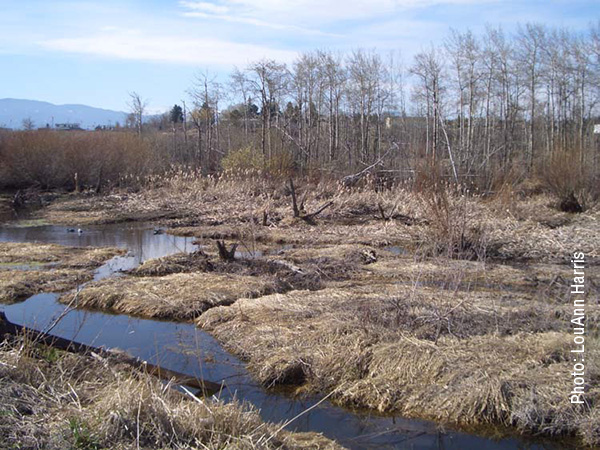As seen in the Bozeman Daily Chronicle 08/02/2020
by Wendy Weaver, Montana Aquatic Resources Services Chris Nixon, Sacajawea Audubon Society
The Native Americans that relied upon the abundant resources of the Gallatin Valley once knew it as the “Valley of Flowers.” A mosaic of twisting streams braided through lush woodlands and meadows, with game trails crisscrossing the distance between the Bridger and the Gallatin Ranges. For current day inhabitants to envision this setting, the vast wetland complex teeming with swans, ducks and other waterfowl interspersed among the elk, bison, moose, and bear would, frankly, require a good deal of imagination.
As Bozeman rushes to accommodate its burgeoning economy and the rapid influx of individuals and families moving here in search of clean air and the great outdoors, we are forced to build new homes, commercial buildings, and infrastructure. To make room for people, we are forced to sacrifice the remaining wetlands and natural areas in the valley. But does it have to be so?
Firstly, we must understand the importance of our riverine wetlands. Wetlands are the single greatest ecological resource for protecting water quality. Wetlands improve water quality by retaining sediment and nutrients which pass through them, providing clean waters downstream. Imagine a series of huge sponges next to the river, storing and filtering water before it enters the stream, filtering contaminants. Wetlands also provide critical important wildlife habitats and migration corridors, and act as a sponge to provide flood control during periods of high runoff. Wetlands maintain groundwater levels and support the increasing demands of our population on the water supply. As these wetlands continue to shrink or be eliminated, their ability to maintain the ecological health of Bozeman’s clean waters and abundant habitat are lost. “No net loss” of wetlands is not only a phrase, it’s a legislative mandate.
National wetland policy, under the Clean Water Act, requires that when wetlands are destroyed, they must be replaced or restored elsewhere; a process known as “mitigation.” Why aren’t we seeing this in the Gallatin Valley? Where did all the wetlands go?
Unfortunately, many of Bozeman’s wetlands have been lost to development action. As it stands, the lion’s share of mitigation for our destroyed wetlands goes, to be replaced, to a private “wetland bank” that is nearly ninety miles away. Whenever this happens, the Bozeman community forever loses these critical natural resources. Fortunately, the City of Bozeman can develop policies today that prevent wetland loss from continuing or temporarily delay mitigation until a local site becomes available.
The Sacajawea Audubon Society and others are working hard to prevent future wetland loss by creating a local wetland bank as they restore the degraded wetland complex east of town.
We need your help to protect the valley’s remaining wetlands and streams. Make your voices heard. Help us protect your water resources. Wetlands are essential for Bozeman’s clean and accessible water resources for future generations. Will you join us in letting the Bozeman City Commissioners know that you, too, believe this is important for our community and their policies should be changed to prevent this loss now?


